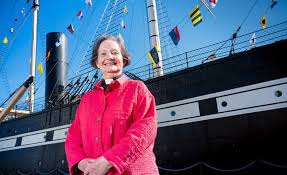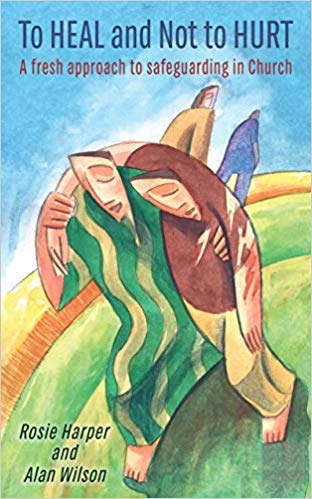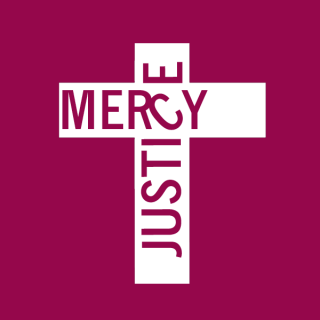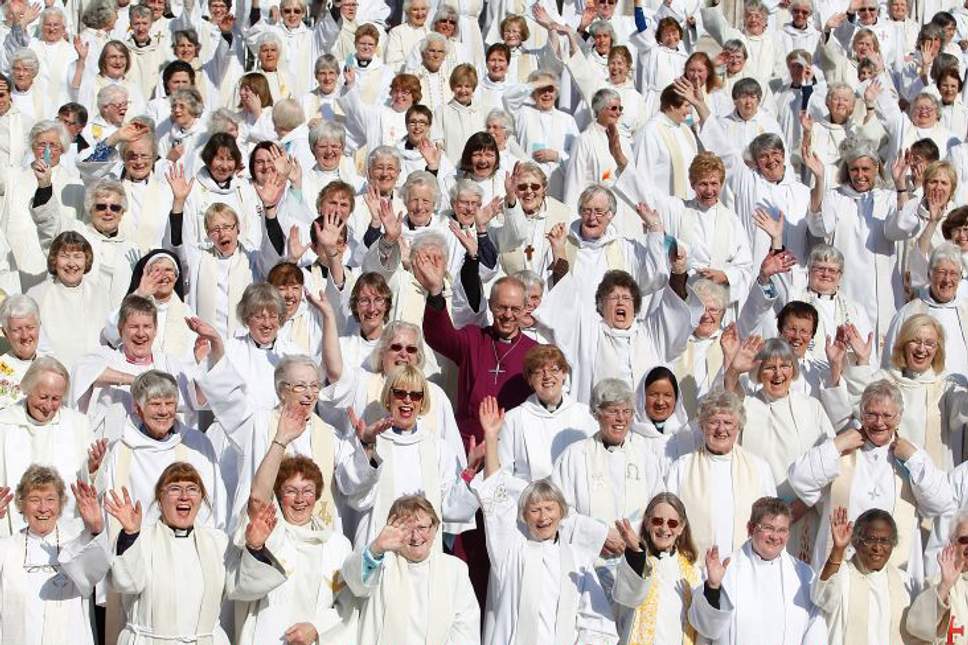
One of the things that commentators like myself have been looking for over the past few days are reactions to the IICSA report from the House of Bishops. I personally do not follow individual bishops on Twitter so I have been relying on Gilo and other tweeters to tell me what is going on. Gilo yesterday noticed one tweet which stood out from all the others. It was from the Bishop of Bristol, Viv Faull. It hits the reader between the eyes because in no way is it one that has been written by a diocesan communications officer. It clearly comes from the heart of the Bishop herself.
The tweet from Bishop Viv can be read by anyone who has twitter on her bishop’s account @Bishopviv1. It first of all refers to her time in the Gloucester 90-94, a period when our paths slightly overlapped in that I was at that time an incumbent working in the diocese. She would probably not remember me but I remember her well, not least because women clergy were still then fairly unusual. The retrospective story we hear now, 25-30 years on, is that these women clergy needed enormous amounts of stamina and resilience to survive in this role.
Viv Faull next appeared on my mental horizon when she became Dean of York. I did some digging into her story for this blog when the saga of her confrontation with the bell-ringers at York Minster became public news. I looked at her story as an example of power and conflict in a large church organisation. The episode took place at the same time as other cathedral sagas at Exeter and Peterborough. It was possible to blog on all these stories, as the reviews and reports that were prepared are helpfully published on-line. A commentator like myself can become informed by taking the trouble to search out these detailed documents. The York saga was less easy to disentangle from afar. The basic facts were that Dean Faull dispensed with the services of the entire band of the Minster bell-ringers over a safeguarding matter. These bell-ringers responded vigorously by organising a boycott which effectively shut down the bells at York Minster for several months. Without going over the details which I do not have to hand, two things happened. The Dean, in spite of a great deal of personal vitriol directed against her, eventually won out. Most of the bell-ringers returned, at the same time submitting to a new strict safeguarding scrutiny.
My readiness to wade in at the time to commenting on this episode at York was partly due to my having a source of inside information. He was in close touch with the events at York Minster. From him I learnt that Dean Faull’s cause was a totally just one. She was completely in the right to take on a nest of vested interests, embodied by the bell-ringer fraternity and their supporters. Her predecessors had failed to act over known problems and these problems had become more serious over the decades. Out of this episode I learnt that Dean (now Bishop) Faull is a person prepared at great personal cost to stand up for what is right and provide decisive leadership when it would be so easier to give in and preserve ‘peace’ by covering over the cracks of disagreements.
I give this somewhat prolonged introduction as a prelude to our understanding the purport of the twitter post put out by the Bishop Faull post IICSA. She refers to what she wanted to say to the Archbishop when, as a deacon in the early 90s, she put up with humiliations and the slights handed out to women clergy at the time. Without it being spelt out, we must take from her comment that she is closely identifying herself with victims/survivors. Like them she once found herself at the wrong end of belittlement, ignoring and humiliation on the part of established church authorities. The two words that I myself selected from the IICSA report, ‘clericalism’ and ‘tribalism’, are also picked out by Bishop Faull. Referring to these words, she says: ‘These silenced and marginalised me. It still does.’
Twitter posts limit the those who use them to a relatively small number of words. It is difficult to imagine how Bishop Faull could have presented more powerfully in her tweet several issues. First, she appears to be identifying totally with the experience of abused survivors, even though the abuse she personally suffered was in a different context. Secondly, she is showing herself willing to describe the evil of a culture that ‘silences and marginalises’. From her experiences in the 90s she can understand the way that institutional power operates against the weak. The IICSA report would have reminded her strongly of the ways that church authorities have to silence you. In previous blogs I have spoken of techniques like deference, charismatic power and patriarchal authority. No doubt Bishop Faull will, at some point, give further commentary on these few words. Even in their present paucity they give great hope to abuse survivors.
Today as a supporter of abuse survivors, I sense an atmosphere of hope for the future. It is not just that a member of the House of Bishops has broken ranks by coming out with strong support for the victims of institutional humiliation. It is that the particular bishop who is doing the supporting is one who truly understands. She has been there; she remembers all the humiliation and pain of being part of a despised group. Thus, she can truly represent them to the House of Bishops. She is of course probably not the only bishop currently ‘breaking rank’ and demanding that the response to survivors is not dictated by communication experts and impression managers. But, in Bishop Faull, survivors potentially have a new powerful champion who has a track record in firm decisive leadership. She is one who has suffered not only as a humiliated member of the women clergy, but also as the misunderstood attacked leader. The ex-Dean of York, is in my book, a worthy ally for the cause of all who long to see the church authorities begin to walk along the path of honesty, justice and transparency. Will things ever be the same again in the Church of England and the House of Bishops? The few words written in a twitter feed by a single Bishop suggest that they won’t. Let us hope that I am right.








